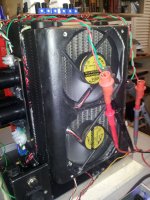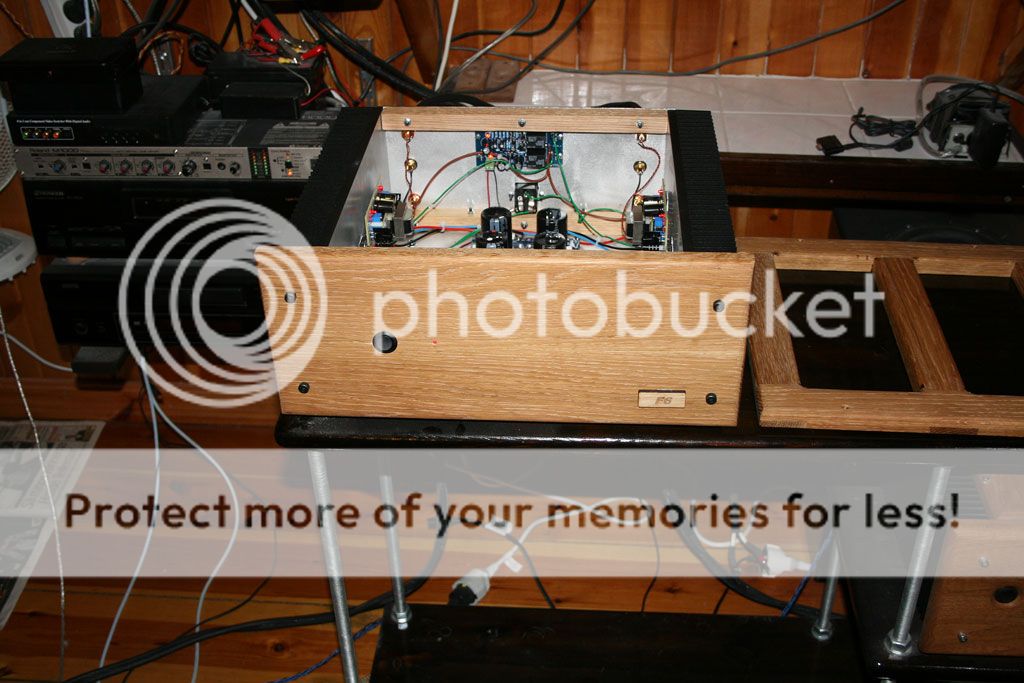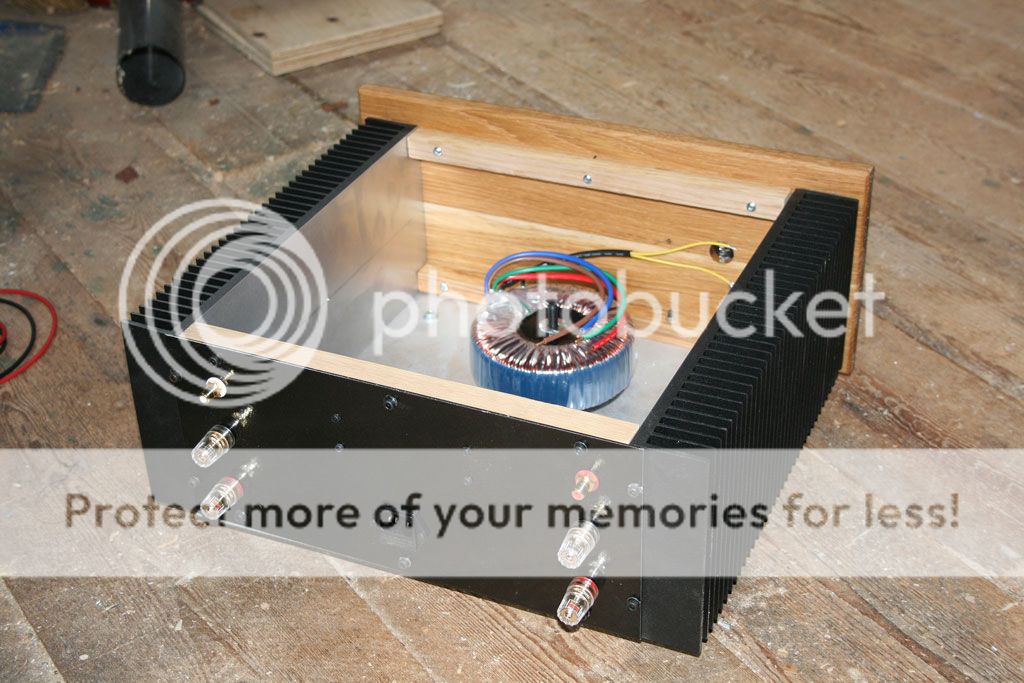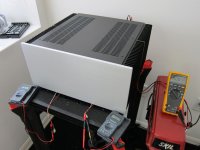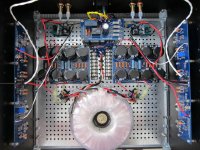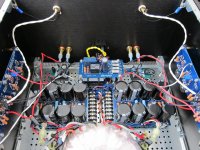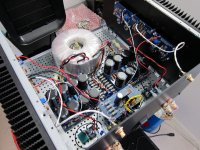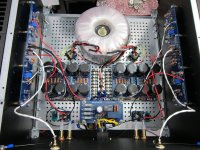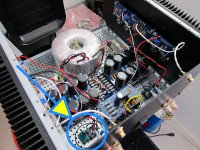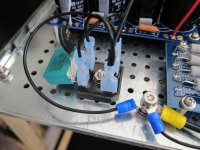Happily, there is NO fan or pump noise to deal with. That was an element at the heart of the design. The baffle thickness and shape (1.5" wider than fans) allows the fans enough separation from the radiator to eliminate any interference/turbulence noise. The original design was to place the cooler horizontal with the fans on the bottom. That was noisy - this is not. Most PC fans are produces in three native speed ranges. These are mediums and with the controller are silent at the 7.5 starting voltage. A 12 volt ceiling allows plenty of room for operation on hot summer days. The outflow of the air also makes quite a difference.
There are two alternative pump configurations still in development, but this DD unit is known around the world for dead silent operation. Unfortunately that company folded, but there are high quality knock-offs available, I will post some videos /w sound in a day or two.
There are two alternative pump configurations still in development, but this DD unit is known around the world for dead silent operation. Unfortunately that company folded, but there are high quality knock-offs available, I will post some videos /w sound in a day or two.
Attachments
Last edited:
Somehow quiet fans always seem to become noisy over time, in my experience. Despite using a low noise replacement fan for my Hafler DH-500 the dust and cat fur buildup makes it quite audible unless cleaned every month or so. Filters on the air inlets would help. Maybe include something like a vacuum cleaner HEPA filter to keep the dust off the internals.
I agree. I use thin foam pads on the computers, but a nice HEPA sheet would be great. Cats and dogs make me itch and sneeze so I am spared that problem. 😀
Just need to learn to stop using my Dremell tool in the same room and I should be OK 🙄
Just need to learn to stop using my Dremell tool in the same room and I should be OK 🙄
Last edited:
Nuclear, Syria and hide within a few lines. Now we are on the NSA watch list. 😱
Nice looking F6.
Nice looking F6.
Very nice! How does it sound?
Well,this weekend I adjsuted the distortion (2:nd)to a minimum I havent decided If I´m going to keep it that way yet... It sounds nice thow..
Does that save any space/volume/cost compared to fan cooling or passive cooling?
Forgot to mention, last night I realized simply adding another AC inlet and switch makes two monoblocks with the cooler as common - in a 10' X 11" X 15" space. Now I think that's packin' it in.😉
Last edited:
BCM Bob, it looks like something nuclear 😀
Nice work!
Candid photo of Bob and his assistant (Igor) applying power to his F5 Twin-Turbo with 32 PSI boost, this weekend. Coincidentally, all the lights went off in Las Vegas when lines voltage was first applied to the amp--so much, for the use of an in-line bulb tester....(!)
Nicely done, Bob....good looking amp!
Attachments
That´s right. I am doing that with my SoZ, see page 165 in this thread. (Or Passdiy site)Dumping the rejected heat into a separate "heating system" is a big advantage where the rejected heat can be used economically.
I am following the experience, since there is always something to learn.
No fans, no pumps.
My take on the F5...
So, this is my take on the F5 design. I like to call this one my "DIYAudio Special"
F5c Amp PCBs (thank you cviller!)
Matched Toshiba 2SK1530/2SJ201 mosfets (thank you Blues!)
Matched Toshiba 2SJ74BL/2SK170BL jfets (thank you Spencer!)
-- Appropriately degenerated (thank you EUVL!)
800VA dual 36Vct SUMR transformer (thank you Richard!)
Dual DIYAudio Universal Power Supply PCBs (thank you JojoD818!)
DIYAudio Power Supply Soft Start (thank you again JojoD818!)
Elliot Sound Products Inspired Ground Loop Isolation and DC Offset Filter (thank you Rod!)
DIYAudio Deluxe 5U Chassis/Panel Parts Kit (thank you Jason and Team!)
DIYAudio posts, comments, perspectives and ideas (thank you forum members!)
But most importantly, thank you Nelson Pass!! I am very much appreciative of your generosity, inspiration and guidance.
The amplifier sounds wonderful.
So, this is my take on the F5 design. I like to call this one my "DIYAudio Special"
F5c Amp PCBs (thank you cviller!)
Matched Toshiba 2SK1530/2SJ201 mosfets (thank you Blues!)
Matched Toshiba 2SJ74BL/2SK170BL jfets (thank you Spencer!)
-- Appropriately degenerated (thank you EUVL!)
800VA dual 36Vct SUMR transformer (thank you Richard!)
Dual DIYAudio Universal Power Supply PCBs (thank you JojoD818!)
DIYAudio Power Supply Soft Start (thank you again JojoD818!)
Elliot Sound Products Inspired Ground Loop Isolation and DC Offset Filter (thank you Rod!)
DIYAudio Deluxe 5U Chassis/Panel Parts Kit (thank you Jason and Team!)
DIYAudio posts, comments, perspectives and ideas (thank you forum members!)
But most importantly, thank you Nelson Pass!! I am very much appreciative of your generosity, inspiration and guidance.
The amplifier sounds wonderful.

Attachments
Nice🙂 get the wires tied up a little. and separate them some more. all in all. a very nice build🙂
Not familiar with this element. Can you explain.
Rod Elliott covers this in the "Use Of Loop Breaker Circuits" section here.
grondloop breaker/ ground lifter. it separate audio ground from chassis ground as long as ther is no current passing the ground. as soon as ther is some current. it will kick in and start conducting🙂
Thanks for the kind words AudioSan.
bcmbob, the link provided by TheShaman is the template I followed for the ground loop breaker/lifter.
I also followed Rod's template for the DC Offset filter found here: Mains DC and Transformers
bcmbob, the link provided by TheShaman is the template I followed for the ground loop breaker/lifter.
I also followed Rod's template for the DC Offset filter found here: Mains DC and Transformers
Attachments
- Home
- Amplifiers
- Pass Labs
- Pictures of your diy Pass amplifier

